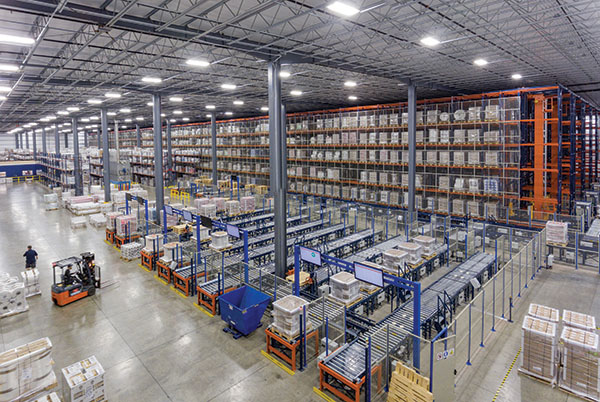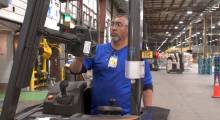In the past, Next Generation Films—a plastic films business that creates product packaging for distinct industrial sectors, particularly food products—owned a warehouse next to its production center. Featuring a 3,000-pallet capacity, the warehouse had other leased warehouses that accommodated all of its production.
Over the last few years, the company experienced huge growth, and the business required a warehousing solution for the films.
The new installation would have to offer a large capacity, guarantee steady inflows and outflows of goods, and provide fast operations. And for food products, total traceability of merchandise would be essential. In particular, such traceability would keep track of merchandise’s status and location at all times, while ensuring excellent distribution, order and cleanliness. Next Generation Films operates with a large variety of different-sized products and pallets daily, which also poses a significant challenge.
After an in-depth study, a storage solutions designer and manufacturer proposed the construction of a 39-foot-high automated warehouse inside the facility. The system comprises six aisles with double-deep pallet racks on both sides, and the storage capacity exceeds 15,400 pallets.
“The automation is extremely efficient, [as] the warehouse runs 24/7,” says Jason Hildebrand, director of logistics at Next Generation Films. “And, it helps us cut logistics costs by improving order preparation.”
Initially, the warehouse was slated for five automatic stacker cranes. However, considering the growth rate of Next Generation Films and its prospects, it opted for one more aisle and installed six stacker cranes in all. SKUs are deposited in the corresponding locations based on turnover (consumer products are placed in front of the warehouse, while those in less demand are placed at the rear). This layout optimizes the movements of the handling equipment and boosts the number of cycles.
The stacker cranes in each aisle ensure a constant flow of products without operator involvement, thus eliminating any logistical errors due to manual management. As they perform their primary job—to shift the goods between the racks and the inbound and outbound conveyors—the cranes operate at a travel speed of 590 feet a minute (and 125 feet a minute when elevated). They also include double-depth telescopic forks, which can reach the second pallet position on all levels. In addition, a full pallet conveyor circuit (located on one side of the racks) is entrusted with the automatic entry and exit of goods.
Next Generation Films works with pallets of different sizes and qualities. For this reason, 40-inch x 48-inch slave pallets are employed to assure load strength and stability—on the conveyor circuits, as well as inside the warehouse. Input stations are equipped with an empty pallet dispenser.
First, operators use counterbalanced forklifts to place the load on top of the slave pallet. Next, pallets are transported through a checkpoint where their characteristics are verified, primarily to determine whether or not they meet established warehouse parameters.
If a pallet doesn’t pass inspection, it will be ejected from the circuit for reconditioning. However, if the checkpoint approves the pallet, a warehouse management system will then assign it a location within the installation, according to turnover and size.
Interlake Mecalux
(708) 344 9999
Article topics









